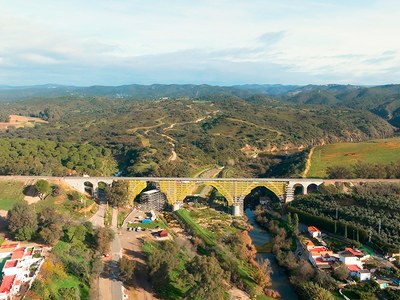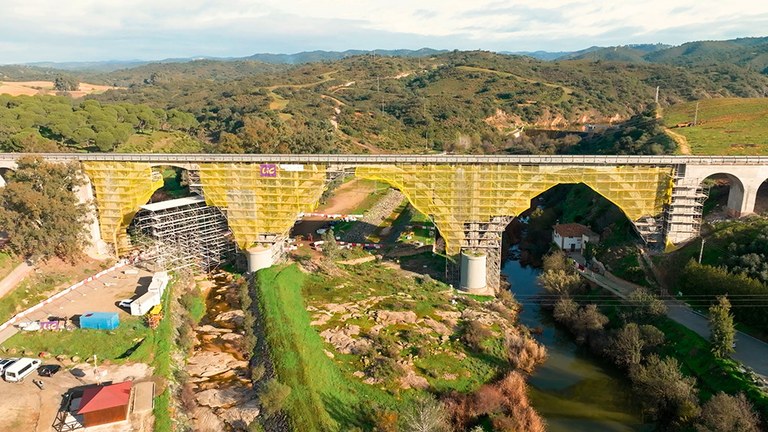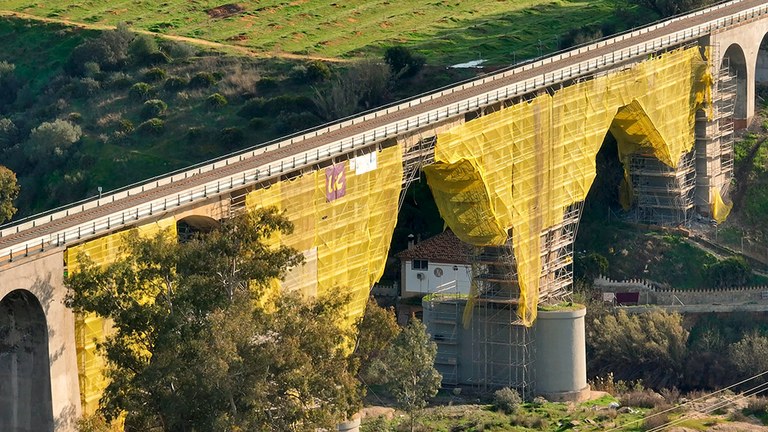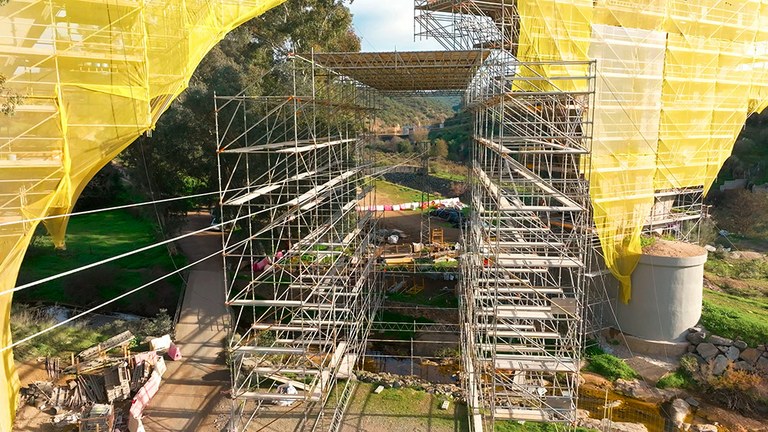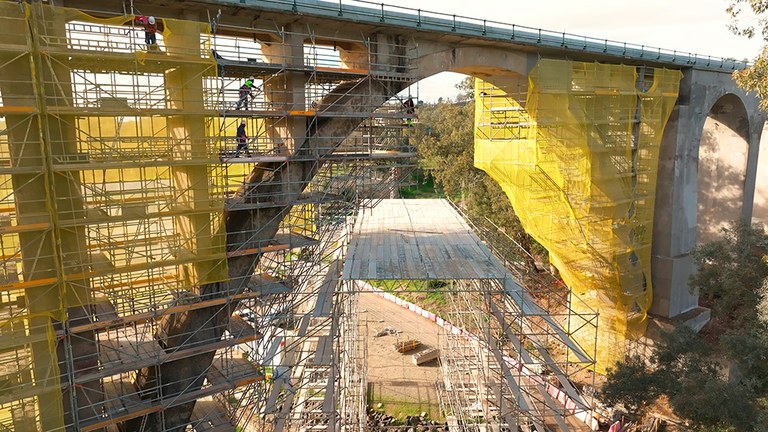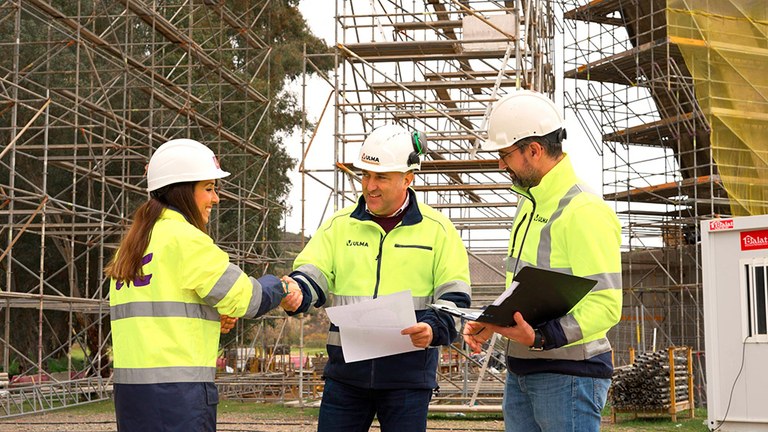14,000 m² of scaffolding for the repair of the bridge over the Rivera de Huesna watercourse, Seville
The project focused on the repair of the bridge, known by the locals as "The Iron Bridge", since the entire bridge was formerly made of a steel lattice structure, with the exception of the abutments and cutwaters. The concrete arches that now form part of it were later built. The bridge is composed of 5 semicircular arch-vaults, 2 arch-vaults with 4 piers and 1 arch-vault with 6 piers, as well as a 222-metre long deck.
The need to carry out a series of actions on the structure was identified in 2010 for a number of reasons. The main problem was a deficiency in the drainage system, which affected the durability of the structure. To solve this problem, the repair project was planned, including the restoration of the entire bridge (abutments, cutwaters and main arches).
Some of the actions carried out in the restoration project include the deck being waterproofed and a proper drainage system being installed. This required the dismantling and subsequent replacement of the railway track.
This has been one of the challenges in the project execution. Another challenge has been the erection of all the scaffolding from one bridge abutment to the other to gain access to all the faces for repair.
The project required a suitable technical solution, a lot of material and adaptation to the orography, and in order to offer the best service to the client, the project design guide was carried out using 3D technology in Revit. “3D technology offers a project design that is much closer to reality and a much more accurate assembly forecast," said Sebastián Salvatierra, ULMA's Assembly Coordination Manager.
The orography of the terrain and the passage of the river required supports at different levels. Therefore, the scaffolding was placed at the base of the piers to ensure access to different levels and to the abutments. The scaffolding supports had to be built as close as possible to the cutwaters, taking advantage of their footings, in order to have a solid area from which to start and save the current of the Huesna brook and the Tamohoso stream running under the bridge.
This repair project also involved cantilever solutions suspended from the arches and the sides of the deck with supports made of load-bearing beams and adjustable jacks supported in the upper area of the 3 central arches.
Structural ties play a crucial role in the adopted solution. There were different types depending on the structural elements to be repaired.
A self-supporting scaffolding structure was also assembled to protect a power line crossing the bridge under one of the arches. For this purpose, 1,300 m³ of BRIO scaffolding were used with two parallel sections separated by 8 m from each other and joined at the top with beams and covered with platforms.
It was a demanding project, as more than 14,000 square metres of material and various solutions were required. “We decided that ULMA was one of the companies that could provide us with this material. It is one of the few companies in the market that could do it, both in terms of volume and assembly service”, commented Mar Baster, Head of Production at LIC.
If you would like to know more about the solutions offered by ULMA, don't miss this project video where full details are provided.


